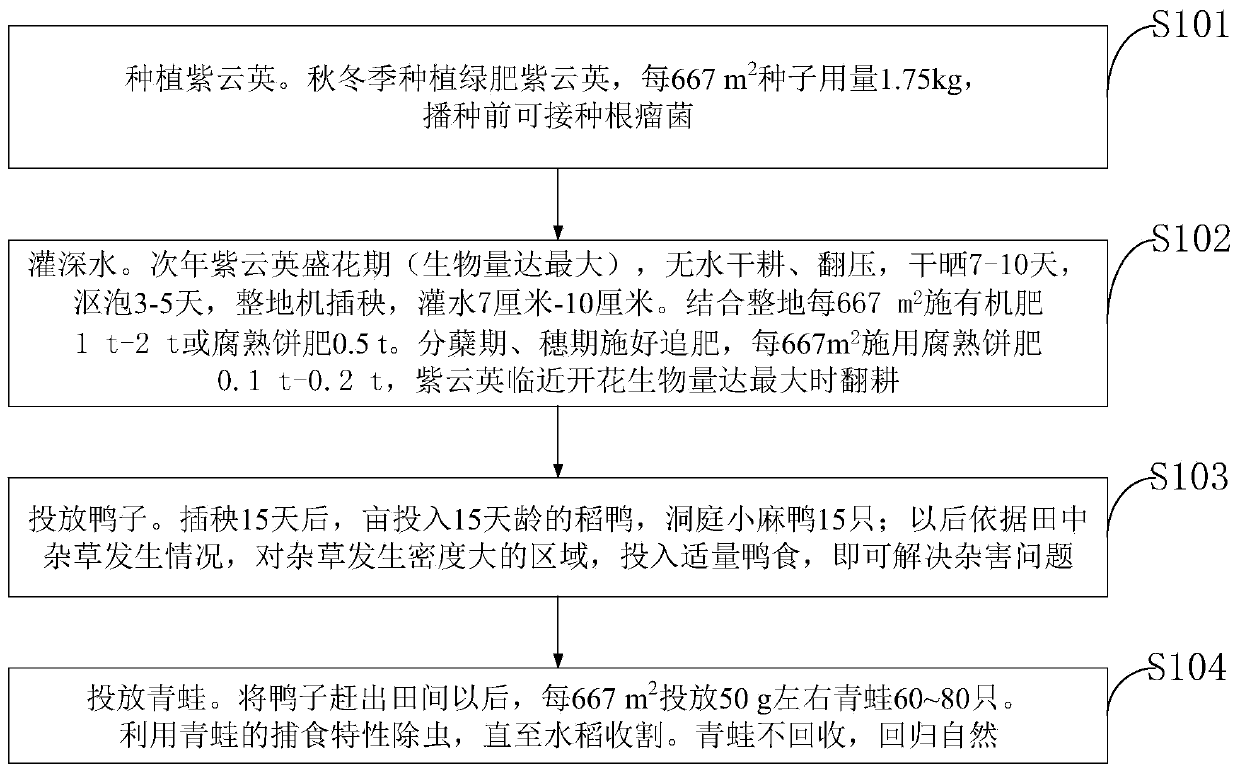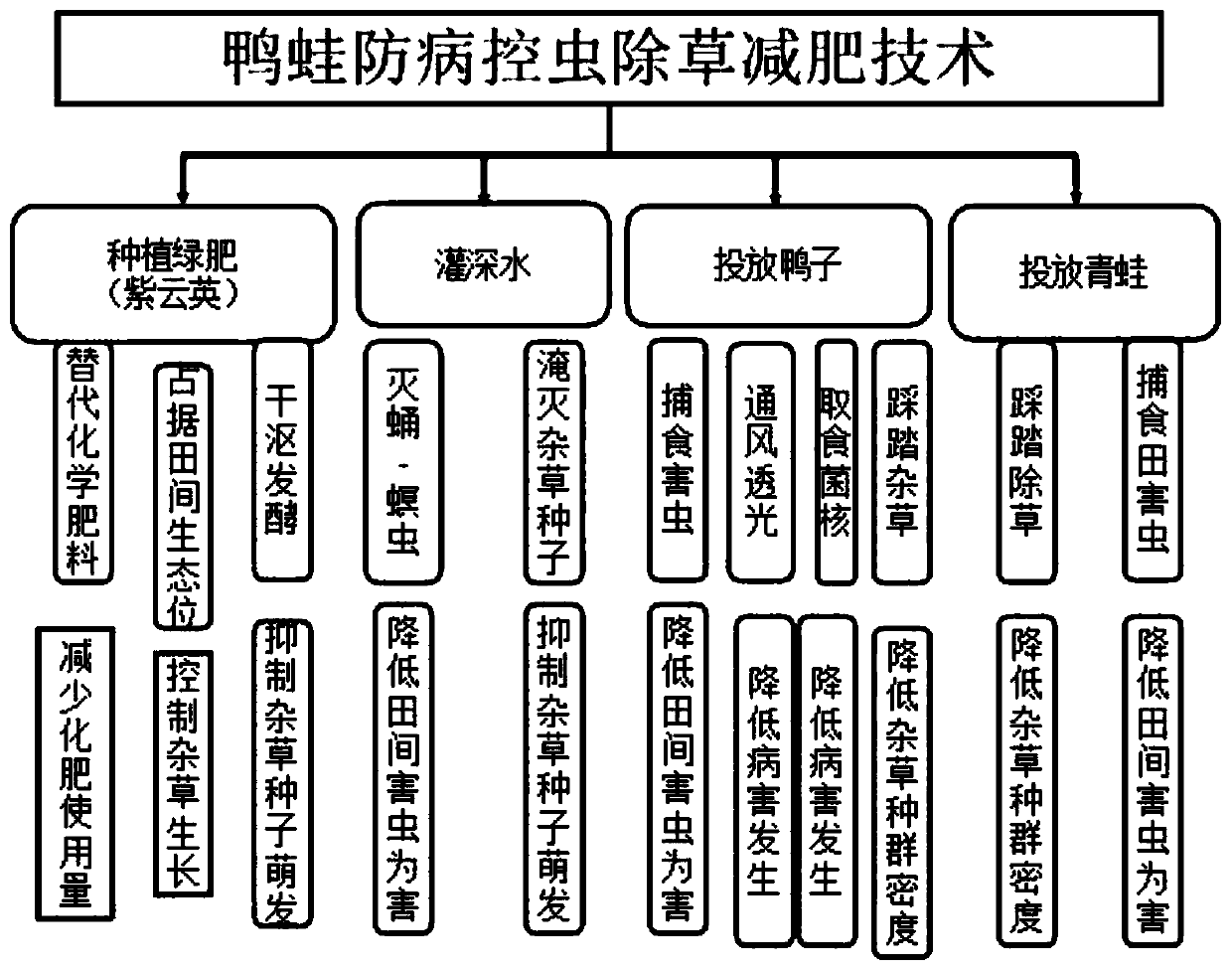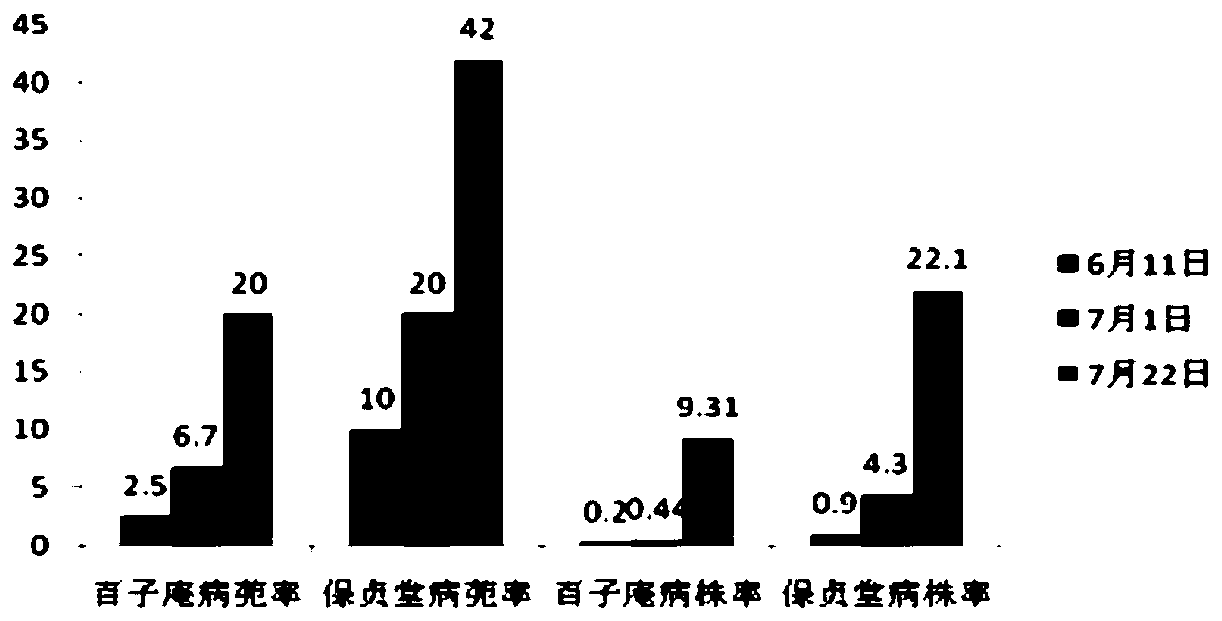Method for producing rice capable of realizing disease and pest prevention, weed control and fertilizer reduction based on ducks and frogs
A technology for preventing pests and rice, applied in the field of rice weed control, can solve the problems of low efficiency of artificial weeding, difficult working conditions, artificial weeding, etc., and achieve the effect of suppressing the living space of weeds
- Summary
- Abstract
- Description
- Claims
- Application Information
AI Technical Summary
Problems solved by technology
Method used
Image
Examples
Embodiment 1
[0051] Under the cultivation mode of duck, frog and rice, weed green prevention and control technology scheme of "green manure to control grass, deep water to control grass, and rice and duck to weed".
[0052] The route of this technical plan is: planting green manure milk vetch in autumn and winter, plowing when the biomass of milk vetch is close to flowering reaches the maximum, dry tillage without water, drying for 7-10 days, soaking for 3-5 days, transplanting rice seedlings by soil preparation machine , irrigate 7-10 cm; after 15 days of seedling transplanting, put 15-day-old rice ducks and 15 Dongting shelducks in the mu, and then according to the occurrence of weeds in the field, put in an appropriate amount of duck food in areas with high density of weeds, that is, It can solve the miscellaneous problem.
[0053] The key technical points of this technical solution are: ①Green manure occupies the ecological niche in the field, inhibits the living space of weeds, dry ti...
Embodiment 2
[0056] Comparison of the occurrence of weeds in duck frog paddy field and winter fallow field after transplanting and before rice ducks go to the field
[0057] In 2019, a survey was conducted on the duck-frog paddy field in Chang'an Village, Shishou City, and an adjacent winter slack field before the rice duck went to the field. The rice variety was Tianliangyou 616. The duck-frog rice was planted on March 15 and machine-transplanted on April 12. Compared with the farmers in the winter slack field raising seedlings by themselves, they transplanted by hand on April 17. Survey sampling area 0.25cm 2 , and the results are shown in Table 1.
[0058] Table 1 Comparison survey of weed occurrence in duck frog paddy field and winter fallow field (May 10)
[0059]
[0060] Conclusion: 28 days after transplanting seedlings in duck frog rice green manure field and 23 days after transplanting in winter slack field, the reduction of barnyardgrass in the former is nearly 100%. The re...
Embodiment 3
[0062] Rice ducks tackle late stage weeds
[0063] The observation of rice duck weeding in Shishou from 2016 to 2019 shows that:
[0064] 1. About 15 days after transplanting seedlings, put 15 15-day-old rice ducks into the mu, and keep 7 cm deep water in the field for a long time. All weeds are below the water layer, and rice ducks can solve all weeds.
[0065] 2. The rice ducks go to the field late, and the barnyardgrass is higher than the water layer. The rice ducks cannot solve the barnyard grass, but they can solve broad-leaved weeds and sedges.
[0066] 3. If the fields are not leveled and protrude from the water surface, the rice ducks will not go there, and there will be many weeds. Rice ducks prefer to swallow debris floating on the water surface and weeds below the water layer.
PUM
 Login to View More
Login to View More Abstract
Description
Claims
Application Information
 Login to View More
Login to View More - R&D
- Intellectual Property
- Life Sciences
- Materials
- Tech Scout
- Unparalleled Data Quality
- Higher Quality Content
- 60% Fewer Hallucinations
Browse by: Latest US Patents, China's latest patents, Technical Efficacy Thesaurus, Application Domain, Technology Topic, Popular Technical Reports.
© 2025 PatSnap. All rights reserved.Legal|Privacy policy|Modern Slavery Act Transparency Statement|Sitemap|About US| Contact US: help@patsnap.com



